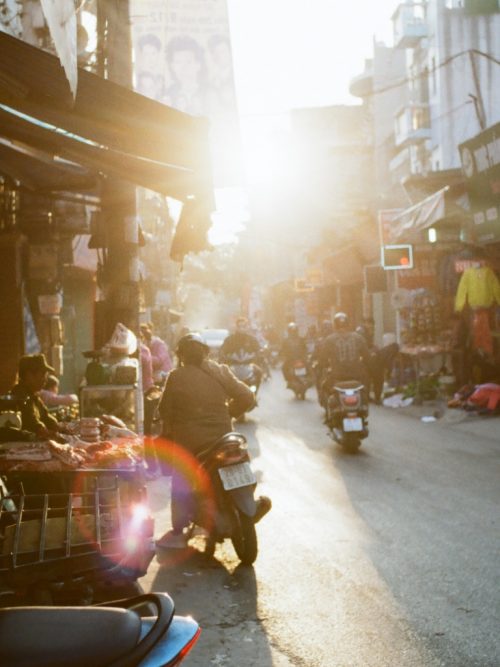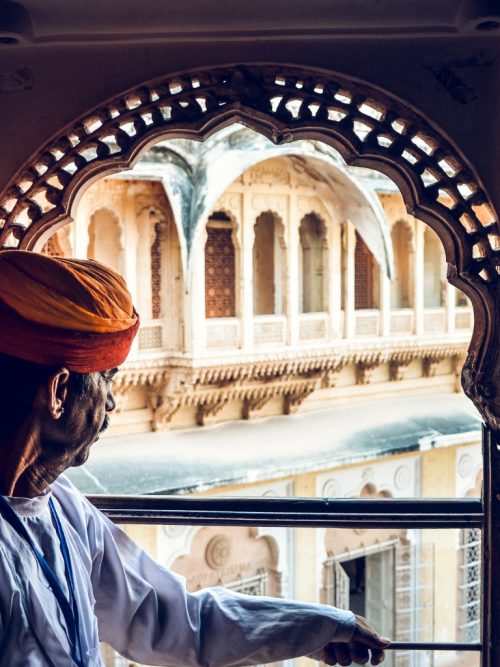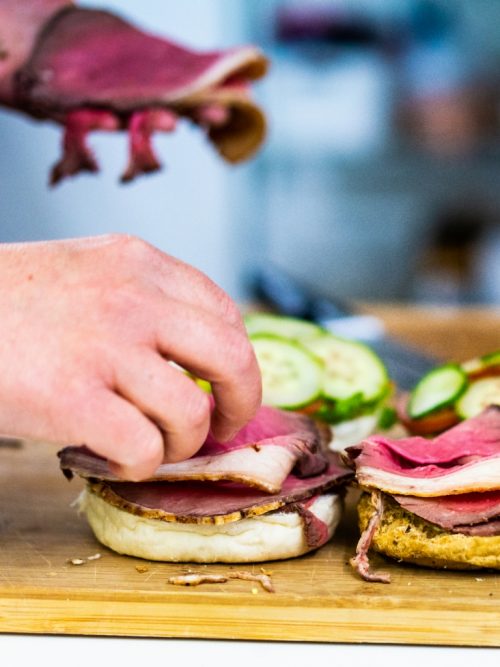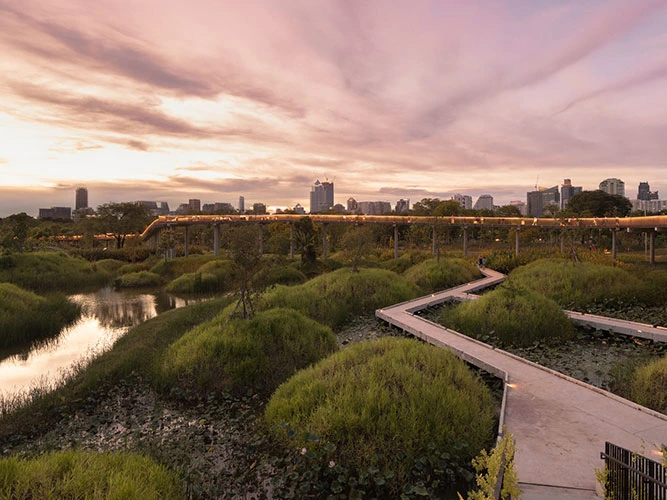7 Reasons to Rediscover Hanoi This Year
15 January 2020
Going stronger than ever after more than 1,000 years of existence, Hanoi continues to be one of Asia’s most beguiling capitals. The city balances a rich heritage stretching back over a thousand years with a cool contemporary persona. Unsurprisingly, given its vintage, history looms large here, which is evident in the many places to visit in Hanoi.
But in recent times, the city has witnessed the opening of a spate of new venues and art spaces that underscore its status as a compelling contemporary hub. The city is also home to one of Asia’s stronger indigenous culinary traditions, yet features a stellar range of international dining options too.
Here are 7 reasons to rediscover the ancient Vietnamese capital this year.
See History and Heritage That Lives On

Begin your journey in the Old Quarter, a warren-like maze of streets that have been a hub of commerce for millennia. Its 36 old streets are divided and named according to the trades still plied here and forms the soul of Hanoi’s cultural architecture, historic relics and religious centres.
This is the best place to start any investigation of Hanoi’s built heritage. The slim buildings characterising the Old Quarter are known as “tube houses”, which combine workshops and living quarters. Don’t be fooled by its narrow frontage: the building runs deep in, a ruse to dodge the taxes levied on the width of street-facing premises. Sneak an in-depth look at this style at 87 Ma May Street, a lovingly restored residence dating back to the 19th century.
While most visitors tick off the Old Quarter, fewer make it to the French Quarter, where grand villas rub shoulders with stately Art Deco edifices. It is also here a reminder of the grisly past still stands: the Hoa Lo Prison, or colloquially known as the “Hanoi Hilton”. Like many of the city’s museums, Hoa Lo paints a vivid picture of a frequently turbulent history. The former penitentiary – today a museum – chronicles its conflict with America and the experiences of former prisoners like Vietnamese revolutionaries and captured US personnel such as the late Senator John McCain.
Evidence of the French colonisation lives on here. Take the Sofitel Legend Metropole Hotel, one of the grandest, old hotels in French colonial style. Guests are welcome to take a tour of its WWII bunker and walk the same halls as Charlie Chaplin and George HW Bush did. Designed by Gustave Eiffel – the same mind behind the Eiffel tower – the Long Bien Bridge continues to stand tall over the Red River, connecting the districts of Hoan Kiem and Long Bien. And in a unique juxtaposition of French and Vietnamese cultures, the St Joseph’s Cathedral exterior follows the Gothic style similar to Notre Dame of Paris, but its interior is decorated with the typical yellow and red colours of Vietnam.
Taste One of The World’s Healthiest Cuisines

With the generous use of fresh herbs and vegetables, little reliance on oil, sugar and dairy in cooking and almost always gluten-free, Vietnamese cuisine can be considered as one of the healthiest around despite being packed with a variety of flavours. As with most Asian cuisines, rice and noodles are a staple here, but the Vietnamese have made it their own, with influences from neighbouring Laos, Thailand as well as France.
Start your day the Hanoian way with a hearty bowl of pho. Hanoi is the spiritual home of Vietnam’s nominal national dish, which typically comes with beef or sometimes chicken and always with a splash of fish sauce. A stand-out place to try pho is Pho Bat Dan; the broth here is rich while the beef tender. For a cheap and fast meal, Pho 10 is a reliable choice – chefs at the original store in Ly Quoc Su street can whip up your bowl in mere minutes.
At mid-day, experience the melding of French and Vietnamese cuisine with a classic Banh Mi easily found at street food stalls all across the city. The baguette sandwich is stuffed with layers of fresh vegetables, typical Vietnamese meats like pork sausage or beef, as well as French ingredients like pate and mayonnaise.
And to experience ngu vi – a balance of five fundamental tastes that guides Vietnamese cuisine for health and well-being – head to Bun Cha Huong Lien, a local Bun Cha joint in the French Quarter made famous by ex-President Barack Obama and the late Anthony Bourdain’s visit in 2016. Healthy rice noodles come together in a sweet-savoury dipping broth of fish sauce, lemon juice, stock and grilled pork, and served with a side of tangy, pickled green papaya, leafy greens, beansprouts, garlic and chilli.
Experience Richness in Culture and Spirituality

From unassuming shrines marked with faded Chinese characters to grand complexes steeped in notability, Hanoi has spiritual sustenance to suit every temple taste. The most important of these is Van Mieu, or the Temple of Literature. Founded in 1070 by Emperor Ly Thanh Tong, the compound features five manicured courtyards and is the site of the Imperial Academy, Vietnam’s first university.
More venerable still is One Pillar Pagoda, originally constructed in 1049 by Emperor Ly Thai Thong as an expression of gratitude to the Goddess of Mercy for granting him an heir. Meant to resemble a lotus flower, the tiny 3sqm temple houses a shrine dedicated to the goddess and is visited by throngs of devotees offering prayers throughout the day.
Get a taste of Hanoi’s arts scene by paying a visit to the various dance, music and culture acts across the city. The neoclassical building of the Hanoi Opera House plays host to a myriad of ballet, orchestra, opera and musical performances, including Lang Toi – My Village. The cultural bamboo circus performance by Lune Productions is a fitting tribute to village life – expect circus and acrobatic acts, dance and folk music jampacked into an hour.
But if there’s only time for one performance, let it be the centuries-old art of water puppetry. The famous Thang Long Water Puppet Theatre is your best bet in Hanoi: puppeteers hiding behind a bamboo screen accompanied by live music take the audience through a journey of ancient village life, crop harvests, stories of mythical creatures and Vietnamese folklore.
Feast on Drinks and Desserts Like No Other

As the second-largest producer of coffee in the world, it’s no surprise coffee is a highlight in Vietnam. While it might have been introduced by the French, the variations of coffee here have made Vietnamese coffee truly unique to the country.
A strong, thick brew served with copious amounts of condensed milk is the locals’ go-to; just ask for Ca Phe Nau when in Hanoi or Ca Phe Sau when in the south. At the dingy, narrow shophouse of Dinh Café, egg yolks are frothed together with condensed milk over a stove for their famous cup of Ca Phe Trung (egg coffee). Alternatively, coconut lovers can opt for a fragrant cuppa made with frozen coconut milk and shaved coconut ice.
By now it should be clear the Vietnamese love their sweets, colours and coconuts. That’s exactly the case for Cha Ba Mau, a three-colour dessert made with pandan jelly, kidney beans, mung beans and sweetened coconut cream heaped over shaved ice in a mug. The dessert is best enjoyed along the streets using the iconic small plastic tables and stools. Try it at Diep Beo Banh Troi Tau, which also serves up other desserts like Che Troi Nuoc (mung bean glutinous balls in ginger soup).
Experience a Medley of Enduring Heritage and Modern Vitality
While Hanoi has a long history and heritage informing the local produce, this ancient city is now clothing itself in some fetching contemporary threads, which manifests in everything from a thriving art and retail scene to a booming market for local craft beers. Hip retail options include An Store, a vintage shophouse boutique in the Old Quarter, and Collective Memory, a treasure trove of high-quality Vietnamese curios and gourmet products.
Hanoi’s modern vitality can also be seen at new dining ventures such as Bao Wow, a buzzing space majoring in creative fusion bao buns, and through an expanding craft beer scene. With over 200 American-Vietnamese fusion beers under their belt, Pasteur Street Brewery’s cosy Hanoi taproom also offers views of Hoan Kiem Lake. Grab bites and quality ales at Standing Bar, which offers a host of Vietnamese craft beer brands on the shores of pretty Truc Bach Lake.
To while away the day, there are contemporary art galleries such as Manzi and cafes like Tranquil Books and Coffee, where you can slow down with a brew and a book. Then to round off another day in Hanoi, opt for fine French-Vietnamese fusion dining at La Badiane, a trusty stalwart set in a spectacular colonial villa.
Find Rest Amidst Nature

Also known as the City of Lakes, Hanoi is home to about 100 natural and man-made lakes. As one of the major scenic spots in Hanoi, Hoan Kiem Lake sees both locals and tourists making their way here to relax or catch a glimpse of the Turtle Tower, a legend-linked small tower in the middle of the lake. Many interesting facts and folklore are linked to the lake – rumour has it that the lake has never run dry through the ages!
In the centre of the city sits West Lake, the largest in Hanoi. Surrounded by many gardens, restaurants, hotels and serviced residences, its surrounding luxurious yet buzzing Tay Ho district attracts the wealthy and expatriates to take up residence here.
If there’s time to spare, not far away from Hanoi is the UNESCO World Heritage Site, the stunning Ha Long Bay. Featuring emerald waters and numerous limestone structures and caves, the bay is a popular site for day trips out of Hanoi. For those who wish to stay longer to experience all the natural wonder has to offer, opt for overnight cruises that will take you deep into the bay for hiking, fishing, kayaking and swimming activities accompanied by sumptuous meals and cooking classes onboard.
Keen to experience village life? Hanoi is also where you can learn to embrace the trend of slow travel. Jump into a farmer’s garb and work at the paddy fields, learn how to cook a typical Vietnamese lunch and attempt to fish with traditional nets – all within a day trip from Hanoi city.
Unwind in an Ancient City Teeming with Nightlife
A perfect evening in Hanoi should start around sundown at one of the city’s numerous rooftop venues. Current hot spots include Twilight Sky Bar – which offers expertly made cocktails with a spectacular outlook over Hoan Kiem Lake – and Tadioto, a bar, café, event space and meeting spot founded by Mr Duc, a familiar name in the contemporary art scene and an astute social commentator. Fancy something livelier? Live shows and DJ sets are not hard to find here. Hanoi Rock City and Savage are some popular spots for local, regional and even international acts to take the stage.
And when you’re ready for a truly local experience, continue the night with some of the cheapest beer in the world. In the same area you’ll find Bia Hoi Junction and Ta Hien Beer Street, offering the quintessential Vietnamese beer experience: think freshly poured draft beer and snacks laid out on small stools and tables by the roadside. While lower in alcohol content compared to its western counterparts, Bia Hoi beer is incredibly cheap, going at an average of VND6,000 (US$0.25) for a tall glass!
With its rich heritage, vibrant contemporary culture and myriad nooks and crannies, Hanoi is a place that rewards those with scope to dig a little deeper. Make the most of your stay at the luxurious Fraser Suites Hanoi. With a prime location within the scenic West Lake district, the serviced residence offers travellers a home close to the city’s heartbeat. And yet, also, a tranquil repose from the hustle and bustle of the capital.

Not a Fraser World Member? Sign up today for free membership and enter a world of privileges
- Complimentary Stays
- Up to 20% off Best Flexible Rate
- Room Upgrade
- Early Check-in
- Exclusive Rewards
- Welcome Voucher



























